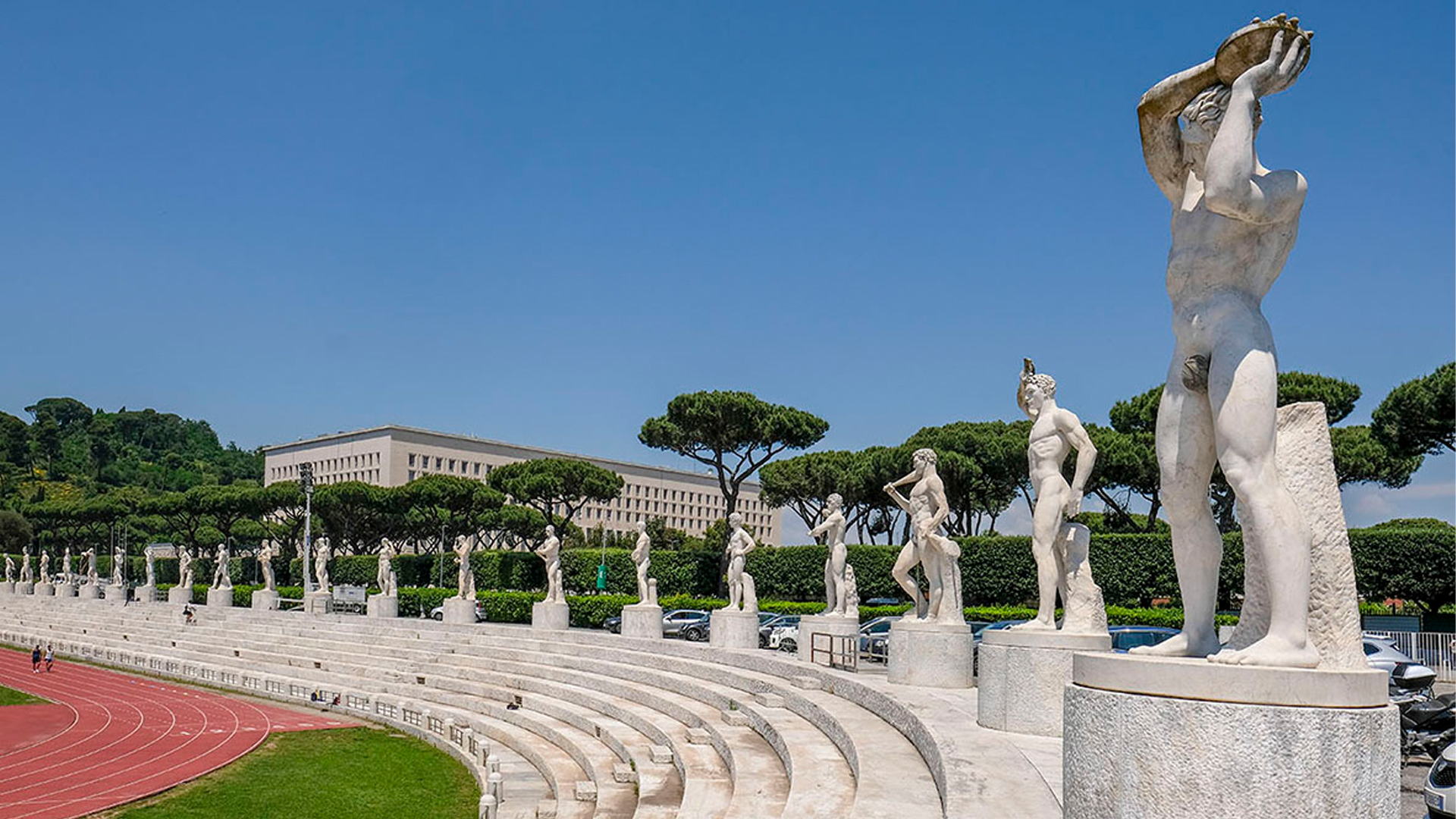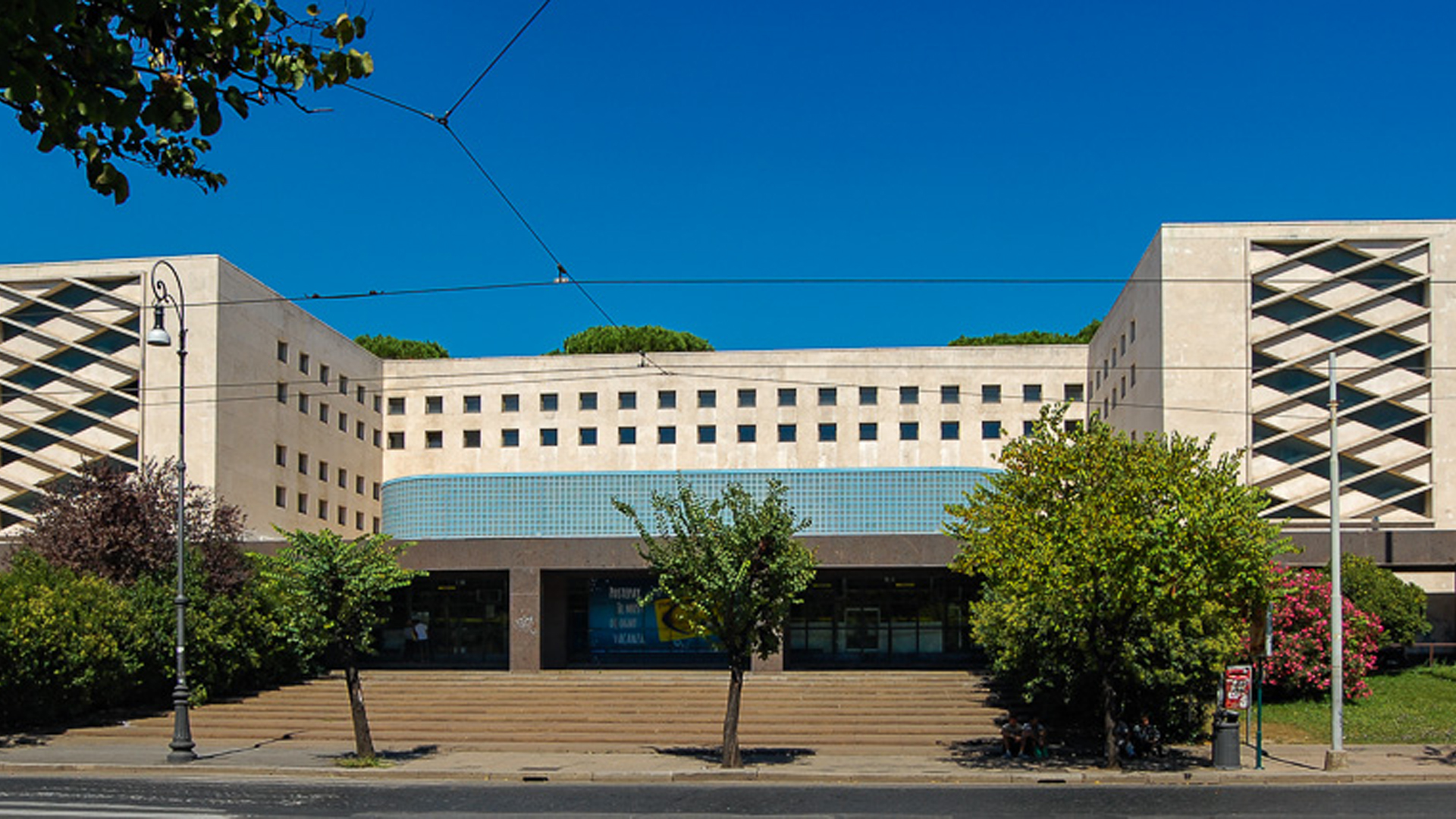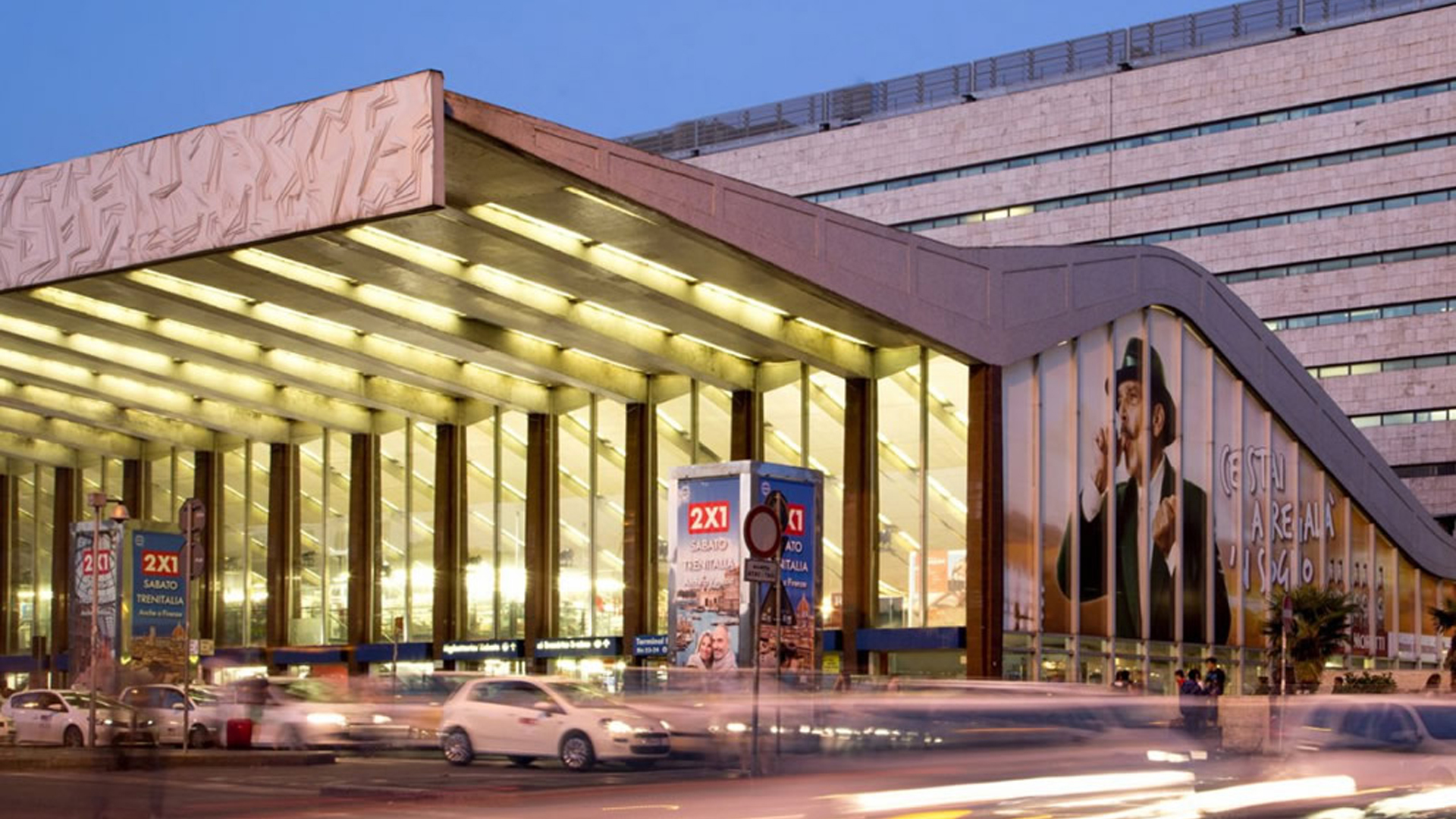Rationalism is an architectural movement primarily that was developed in Italy in the 1920s and 1930s. Vitruvius had claimed in his work, “De architectura”, that architecture is a science that can be comprehended rationally. Italian rationalism established contact between the technical experimentations of the European avant-gardes and the modernist Fascist Compulsion for self-affirmation. Rationalism, at its core, was about matching form and function. In Rome, you can enjoy outstanding buildings exemplary of this unique architectural style that is rarely listed in tourist guides:
Palazzo della Civiltà Italiana

The 54 arches in this post-WWII six-story marble building immediately bring to mind a square version of Rome’s Colosseum. Designed in 1936 but not completed until after the war, the austere exterior reflected the state of the building that remained empty or only partly leased for decades until the Fendi fashion house recently made it its global headquarters. Renovated with lighting by Guzzini and furnishings by Vitra and Fendi, other makeover elements include dark woods, Lepanto marble, stained glass windows, and crystals. The ground floor is open to the public and dedicated to an exhibition called Fendi Studios. Visitors can make reservations for guided tours on weekends that include access to the terrace of the building to enjoy a panoramic view of the EUR (Esposizione Universale Roma) district and the entire city.
Stadio dei Marmi, Foro Italico

Architect Enrico Del Debbio designed this vast sports complex located at the base of Monte Mario in Rome between 1927 and 1933. The immense structure, completed between 1956 and 1968, includes an athletic track, clay tennis courts where the Internazionali BNL ATP Masters take place every year in May, swimming pools, and the Olympic Stadium, home of the AS Roma and AS Lazio Football Teams. The bleachers and 65 statues along the athletic track, donated by the Italian provinces and created by 25 sculptors, are entirely in Carrara marble. The mosaics were crafted by Angelo Canevari.
Palazzo della Farnesina

The Farnesina Palace stands on an area that belonged to Pope Paul III Farnese, from which it derived its name. Constructed of travertine marble, the stately building’s rationalist symmetries reflect the style of simplified monumentalism. With more than 1,300 rooms across nine floors, with a façade 554 feet long and 167 feet high, Farnesina Palace covers an area of 1,292 square feet and is, along with the Reggia of Caserta, one of the most voluminous buildings in Italy.
Sapienza University of Rome

La Sapienza University is one of the oldest Italian universities, founded in 1303 by Pope Boniface VIII. In the seven centuries since its foundation, it has been at the center of the history of Rome and the entire country, first as a university linked to the Popes, then as an autonomous Studium Urbis (Study Town), gradually extending its academic prestige to new disciplines, both scientific and humanistic.
Poste Italiane, Via Marmorata

The interior of this remarkable work of Rationalist architecture has unfortunately been greatly modified over time. For example, the two large ornamental pools that originally graced each side of the staircase were removed to prevent accidents. Behind the building is the Parco Della Resistenza Dell'8 Settembre 1939, designed by architect Raffaele De Vico who in 1931 also designed Rome’s Monte Testaccio public park.
Roma Termini Train Station

This monumental building features a sinuous, wavy shape that stretches 62 feet to the frontal Piazza dei Cinquecento. Considered one of the most significant examples of Italian rationalism, the Piazza turned 70 in 2020, although the laying of the foundation stone was recorded in the mid-19th century. The train station—one of the busiest in the world—was inaugurated in 1950 and owes its name to the nearby Diocletian thermal baths built around 300 AD.
Barbara Benzoni
Barbara Benzoni was born in Milan and lives between Rome and Tuscany. She is devoted to USA, the land of courage and innovation. She’s Peter's super-lucky mum and Ale's wife. Cinema, art, good food and only beautiful things are the themes of her existence. With a degree in Italian literature and a Masters in Sports Management she can both enjoys books and basketball matches. In 25 years she has been organizing sport events all over the world and she’s been lucky enough to meet the greatest champs ever. Curiosity in everyday life and people are her drivers. Her personal icon is Mohammed Ali : "It's not bragging if you can back it up".

